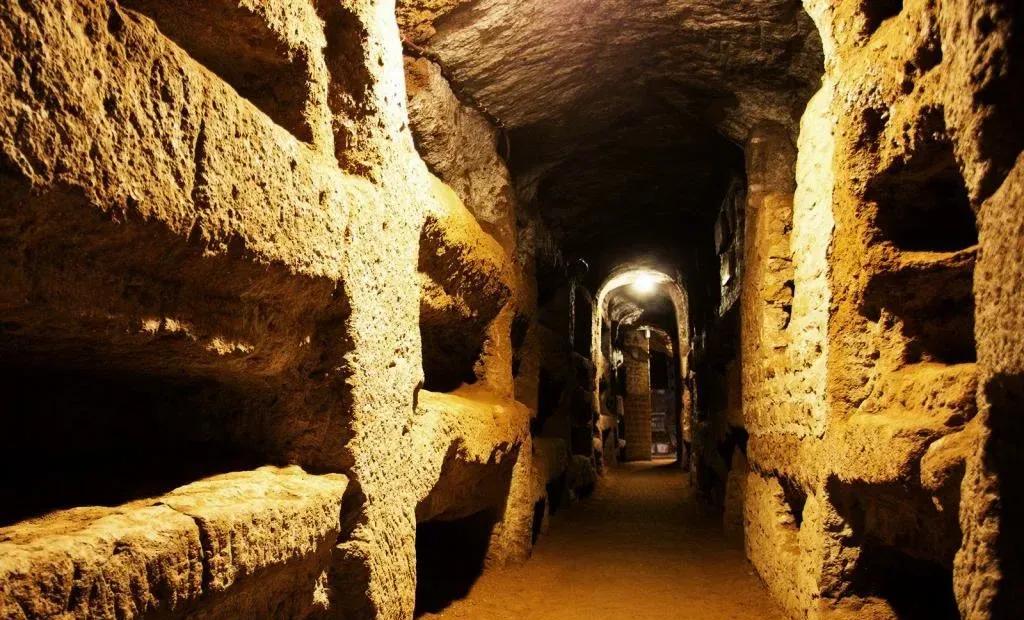The catacombs are a special kind of cemetery, and the main difference is that people who want to visit this place also have to go down to the ground. I take you into a world that was full of life in the early centuries of Christianity. Agreed, this is a rather contradictory term related to the burial place of the deceased.

Although the term "catacombs" is often understood to refer to cemeteries where dead Christians are buried, the concept of catacombs is much earlier. The techniques used by the Etruscans were also known to the Romans themselves.
Undoubtedly, the factors that promote the development of this type of cemetery are . The geological structure of the area between today's Rome and Naples. These rocks, made up of volcanic tuff, are a very easy material to process (tuff is a mixture of sand, volcanic ash and silicone binders) in which corridors and burial pits are excavated with surprising ease.
The Catacombs of Rome
But let's take a look at the catacombs of the Italian capital. In the centuries BC, there were about 60 cemeteries of this type in the city. In terms of "technology", these are corridors, with niches on the walls, one higher than the other. These niches are called Locules. There are also small rooms (so-called cubicles) carved into the rocks.
Of course, the tomb conceived in this way must be enclosed, not only for aesthetic reasons, but above all for health and hygiene reasons. Therefore, each niche has a special plaque. It serves not only as an element for coronation and closure of the tomb, but also as a space on which the names of the deceased are written or carved, and sometimes also contains graphic elements (symbols of birds or olive branches).
The catacombs themselves are extremely "democratic" cemeteries. Adults, children and popes were buried underground.
The Catacombs of San Calistos
The oldest Roman example of this type of monument is the Catacombs of St. Calistus*, the largest of which dates back to the middle of the second century (around 150 AD). 50 years later, Pope Zephyrinus delegated the administration of the area to the deacons and former slave Callistus, who then went down in history as bishop of Rome, the pope.
The most interesting, however, is the number showing the size of this first-ever cemetery belonging to the Church of Rome. In its heyday (although this is a very unfortunate word), the catacombs of Santa Calista stretched for more than 20 kilometers. And that's not all: the cemetery has three to five floors, and an estimated 3 to ... 30 meters (equivalent to the height of a 10-story residential building), the number of burials reaches (note) - 500,000!.
Tomb painting
Early Christian art, represented by paintings known as catacomb art, was inextricably linked to the catacombs. Of particular note are depictions of known scenes in the Gospels and the Old Testament, such as the resurrection of Lazarus, the Samaritan woman at the well, or Jonah in the Bible. The image of the Good Shepherd is extremely important and noteworthy—in Christian iconography, it means the image of Christ.
Persecution of the first Christians
Christians have been persecuted almost from the beginning. Nero set fire to Rome in order to deal with the newly formed religion, and his actions were only a prelude to what he had done to christians over the next three hundred years (a persecution that did not end until 313 A.D., when Emperor Constantine issued a decree). Before that, however, a veritable sea of blood had taken place. The catacombs, where people gather to pray, where the worship of martyrs takes place, become symbols of heroism in which people are prepared to give their lives for their faith.
Catacombs online
We live in an era where thanks to amazing technology you can do things that our parents and grandparents never dreamed of. In 2013, thanks to the advent of Google Street View, you can virtually visit the first Christian cemeteries, one of them: the Roman Priscilla Catacombs in Via Salari. These catacombs were originally quarries and later became cemeteries. Due to their size and resemblance to underground labyrinths, they are considered the most interesting for tourists.